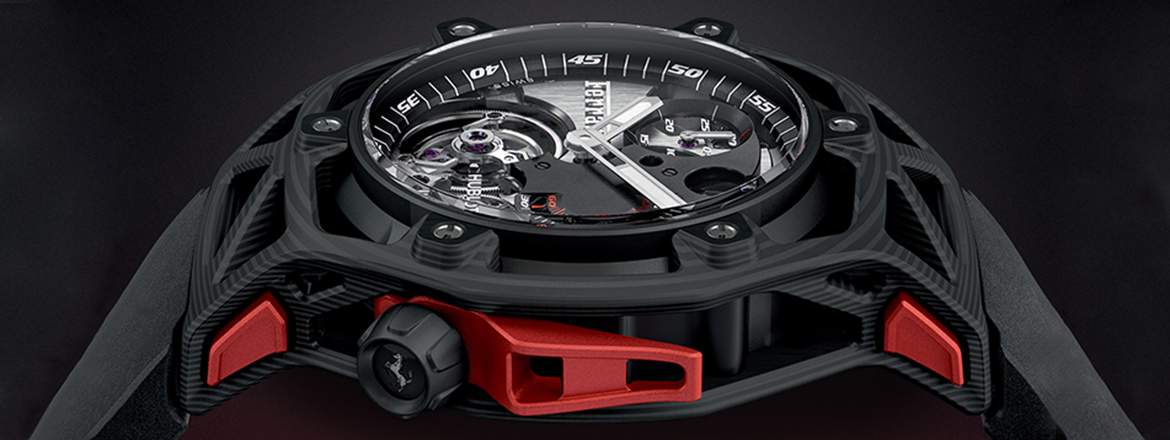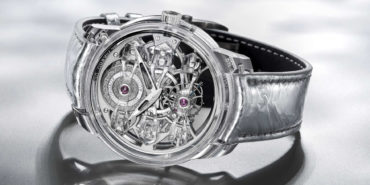Specialist Picks • 03 Jul 2018
Light As A Feather, Strong As Steel – Carbon Fibre In Watchmaking
Watchmaking has always relied on array of materials, from the traditional alloys like steel or gold, to more surprising metals such as titanium – now arguably a classic – or tantalum, as well as more exotic materials such as ceramic. One material that remains quite rare, though growing rapidly in popularity, is carbon composite.
Carbon fibre reinforced polymer – sometimes referred to as carbon fibre or carbon composite – first became widespread in industries like aerospace and Formula 1 in the 1980s. But the industrial use of carbon fibre itself actually dates back to Joseph Swan, who produced carbon fibres as filaments in light bulbs back in 1860, an idea later further developed by Thomas Edison, who baked cotton threads or bamboo slivers at high temperatures, carbonizing them.
The most common form of carbon composite today features a regular weave, where a continuous tow is wound onto a reel. A tow is a bundle of thousands of continuous individual carbon filaments held together and protected by an organic coating – a sort of resin that creates a solid material.
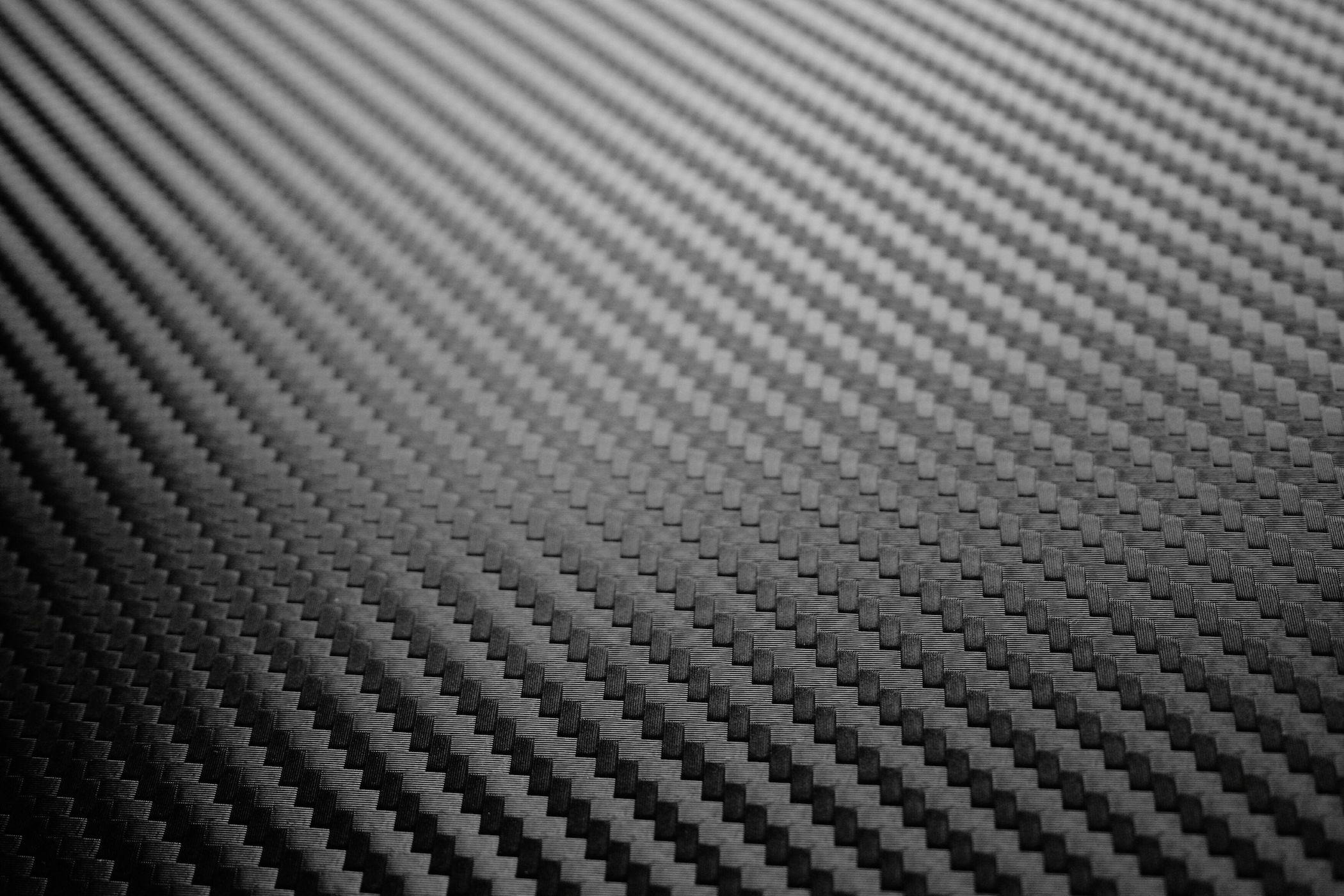
Compared to metals, the main advantage of carbon composites is lightness – it has a density of 1.7-1.9g/cm3, compared to approximately 5g/cm3 for titanium, 8g/cm3 for steel and 19g/cm3 for gold. So a watch case that weighs 40g in steel will be more than 95g in gold but less than 10g in carbon composite. That impressive lightness has a direct effect on wearability and comfort.
Another advantage of carbon composites, despite their lightness, is great shock resistance as well as a low coefficient of deformation, or strength. For this very reason, the material has been the focus of watchmakers who want to create shock-resistant but light watches.
But it goes beyond functionality. The look of carbon composites is also one of the key reasons for the material’s attractiveness. Predominantly black, yet intricately textured, carbon fibres are interesting because of their repetitive geometric pattern. Other sorts of composites have different patterns. “Forged carbon” for example has its fibres arranged randomly, creating a component that has strength in all directions while offering a unique surface with no regular pattern that recalls marble or other organic material, making each watch case in this material unique.
Carbon composites appeared in watchmaking in the 1990s, pioneered by brands such as Audemars Piguet, and slightly later, Richard Mille. Despite being rather trendy today, the use of such composites remains quite exclusive, simply because the cost of manufacturing such cases is higher than most traditional metals.
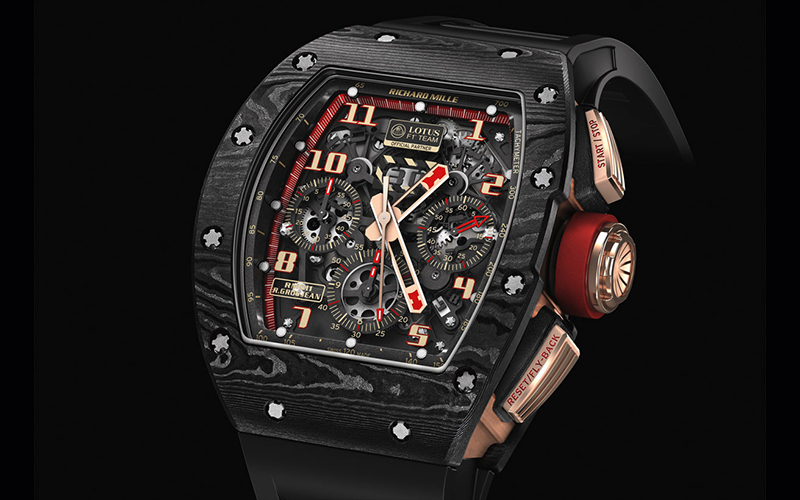
One of the brands best known for its use of carbon composites is Richard Mille. Considering the strong link between its watches and Formula 1, it was a natural choice for the brand. Yet, RM doesn’t just copy its peers, and it uses a specific type of carbon composite, NTPT, or North Thin Ply Technology, after the company that makes the mateiral.
Unlike traditional carbon fibre, NTPT doesn’t consist of a woven pattern but several hundred of layers of carbon fibres, which are held together with resin, creating a solid block of carbon composite, which is machined perpendicular to the grain to reveal surprising patterns.
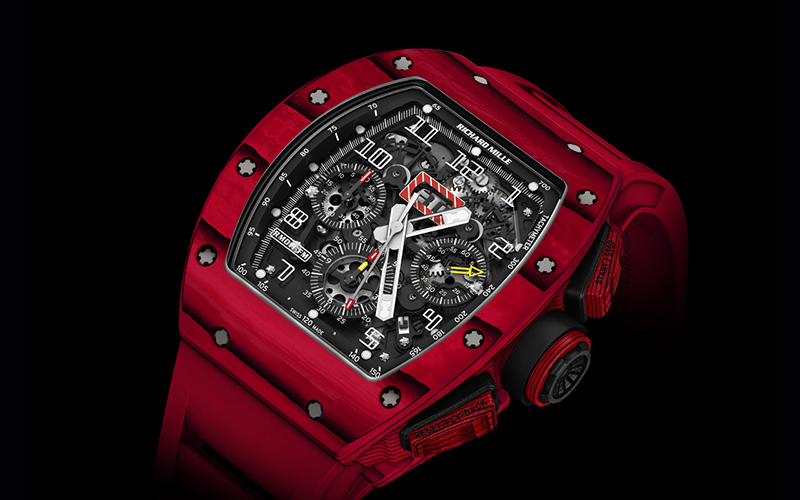
Never short of surprises, Richard Mille enhanced the material by combining it with coloured quartz. Silica layers are inserted between layers of NTPT carbon, positioned at 90 degrees to each other. Cutting the blocks into cases then reveals the randomly arranged layers, creating a unique look for every watch and an alternation of black (carbon) and coloured (quartz) layers.
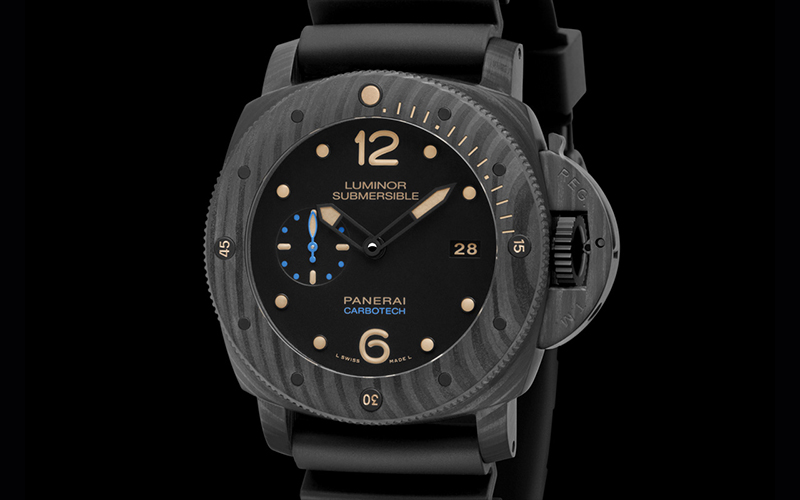
Panerai has also used carbon composites, but again not with a traditional form of the material. Panerai relies on CarboTech, which is thin sheets of carbon fibre, compressed at a controlled temperature under high pressure, combined with a polymer named PEEK (Polyether Ether Ketone). This results in a distinctive pattern that will be unique to each watch, as well as a stronger and more durable composite. Introduced first in 2015 on the Panerai Luminor Submersible 1950, this material was later be used on the Panerai LAB-ID, a concept watch with a 50 year warranty, thanks to a movement with self-lubricating parts, almost no jewels and carbon composite bridges.
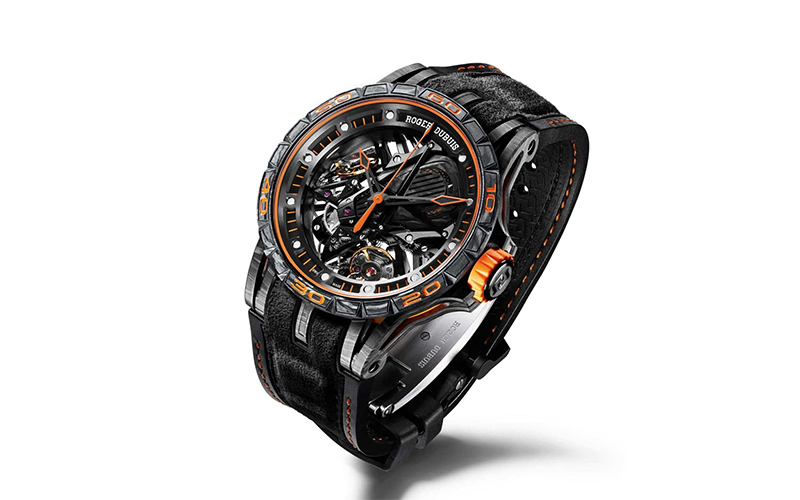
Historically more inclined towards traditional watchmaking, Roger Dubuis recently inked a partnership with Lamborghini, sealed with the new Excalibur Aventador S. And what could be better than using the exact same composite found in the Lamborghini Aventador for its namesake watch?
The new watch boasts a complex twin-regulator movement (with two balance wheels) while having a case made of carbon fibre SMC, a composite material like that found in Lamborghini cars. It’s made with chopped carbon fibres compressed in a polymer resin, revealing a strong and non-linear patterned material, which perfectly suits the genesis of the watch.
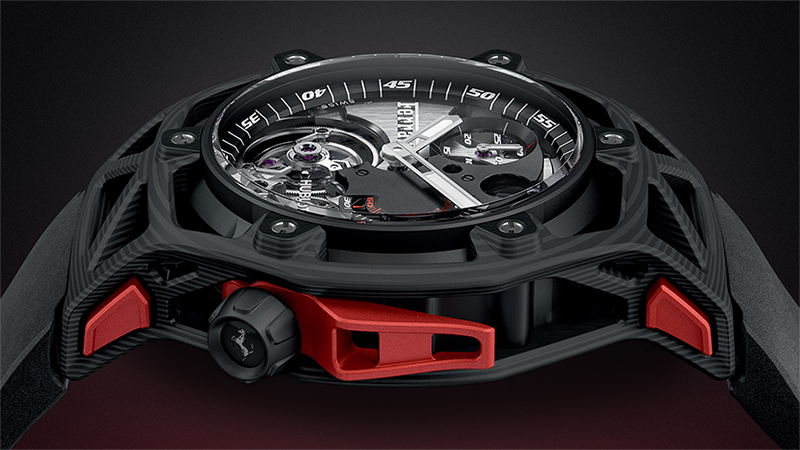
For its complex Ferrari-designed timepiece, the Tourbillon Chronograph Techframe, Hublot decided to create a frame for the movement rather than a traditional watch case, meant to evoke the chassis of sports cars. Available in titanium or gold, the watch-frame makes even more sense in carbon composite, offering extreme rigidity, protection and lightness, as just it would in an automobile. For the frame, Hublot chose to use PEEK Carbon Fiber, just like Panerai.
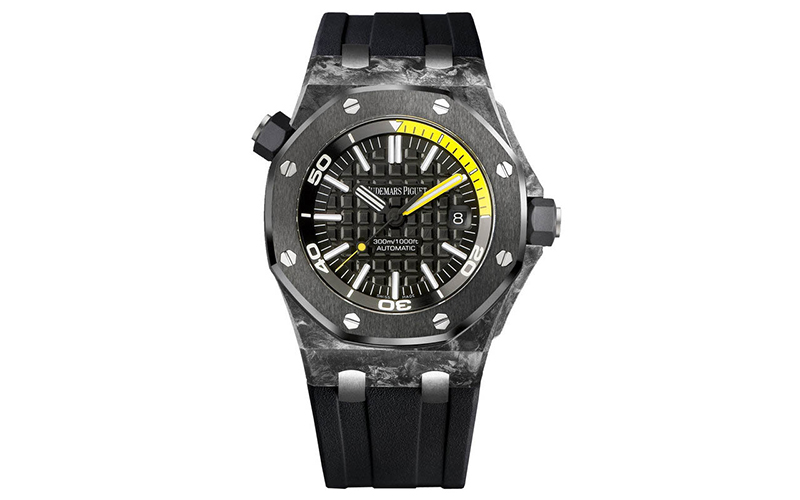
Last but not least, Audemars Piguet was one of the very first watchmakers to utilise carbon to manufacture cases with its “forged carbon” Royal Oak Offshore Alinghi, perfectly suiting its tradition of mixing materials like rubber and ceramic, and even steel on a high-end watch. The carbon composite used by AP has its carbon fibres arranged at random, then set in polymer at high pressure and heat, hence the “forged” label and marbled appearance. More recently, the brand reintroduced its Offshore Diver in a lightweight forged carbon case, having also done the same for the Offshore Chronograph 44mm.



